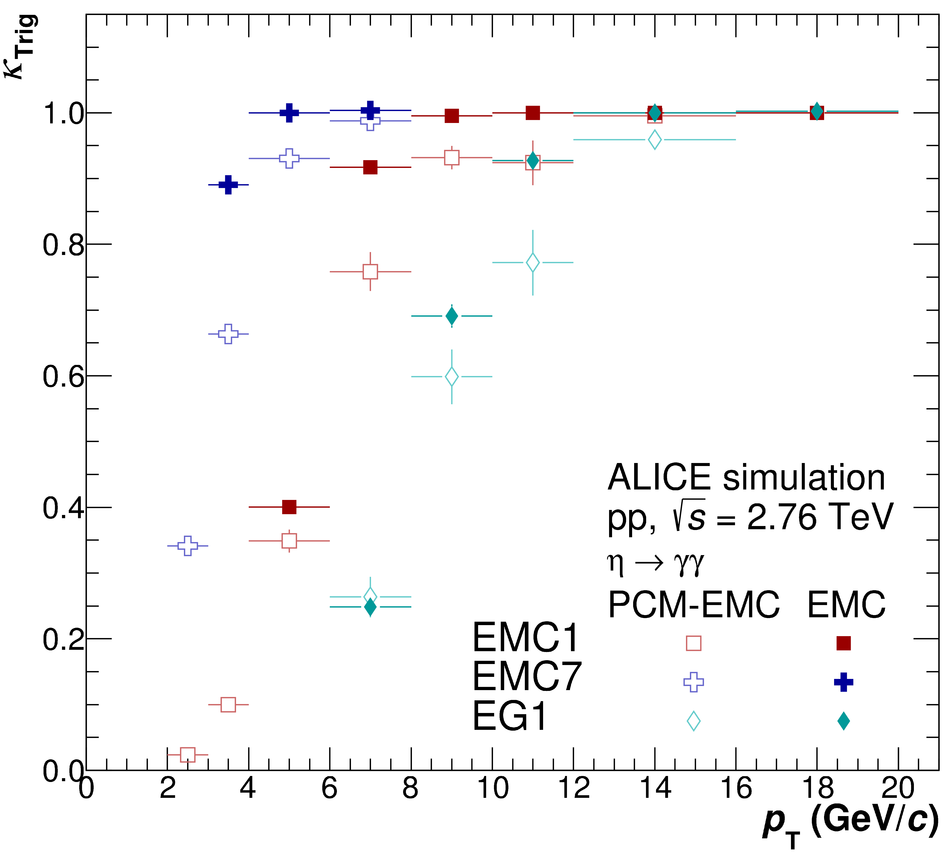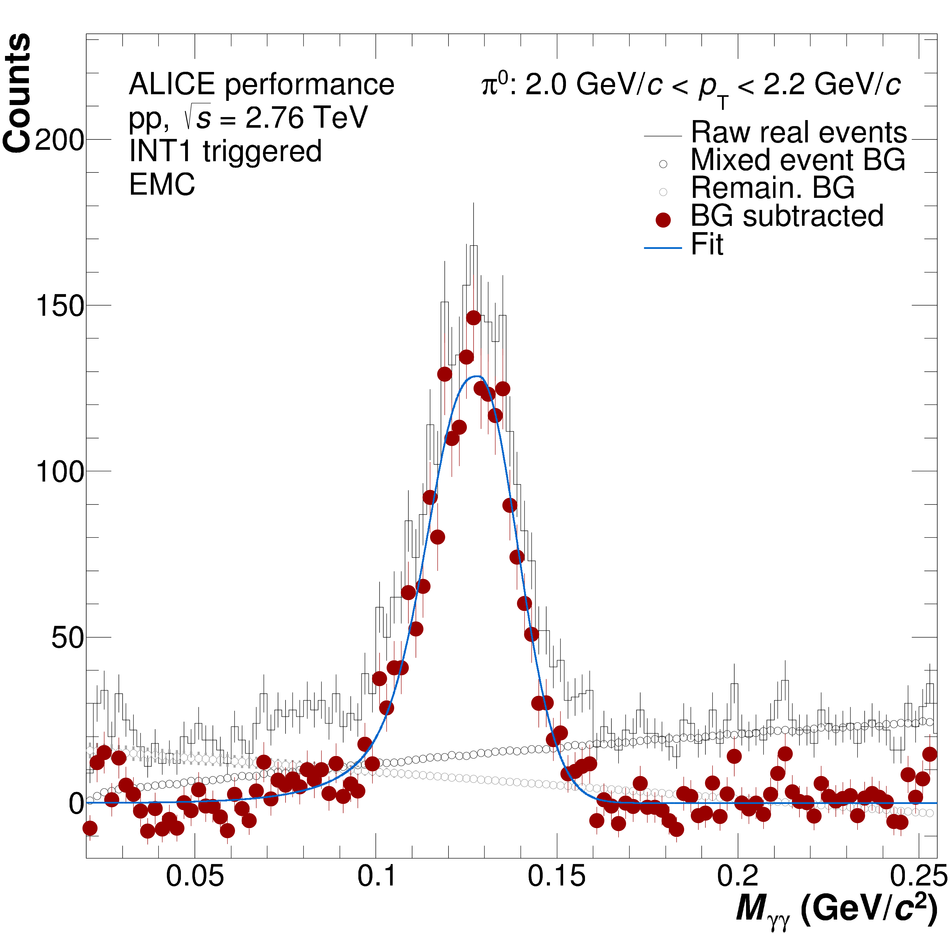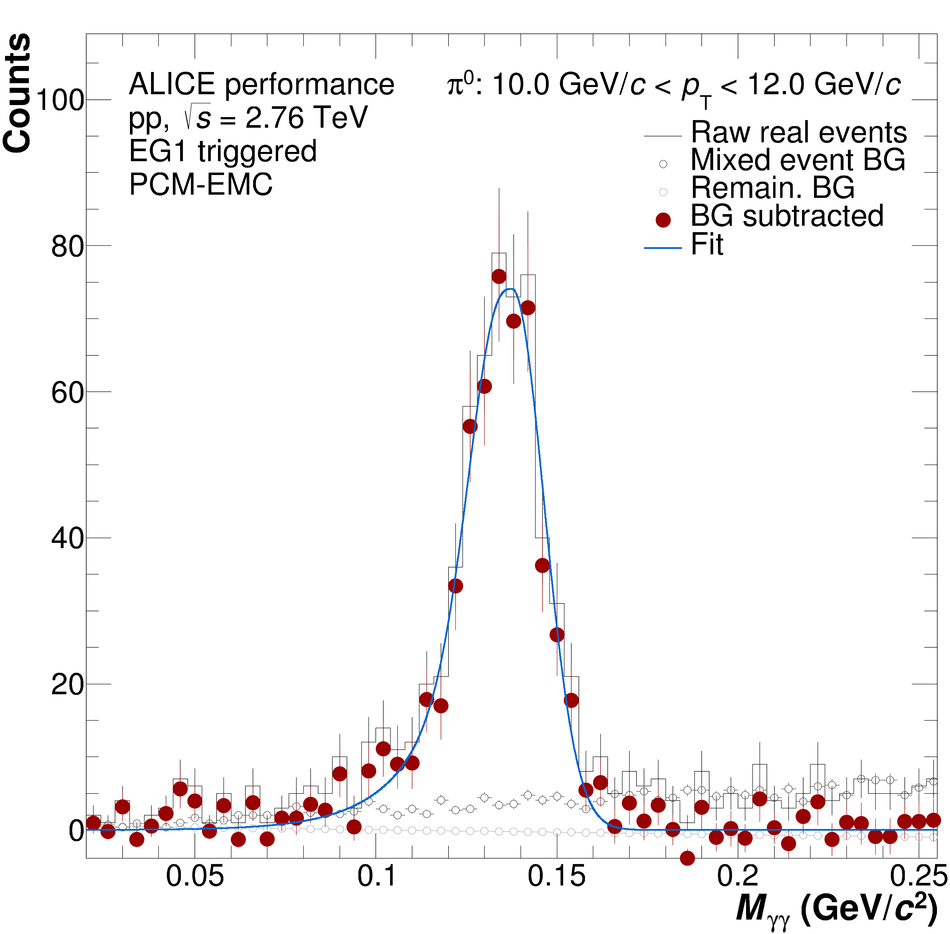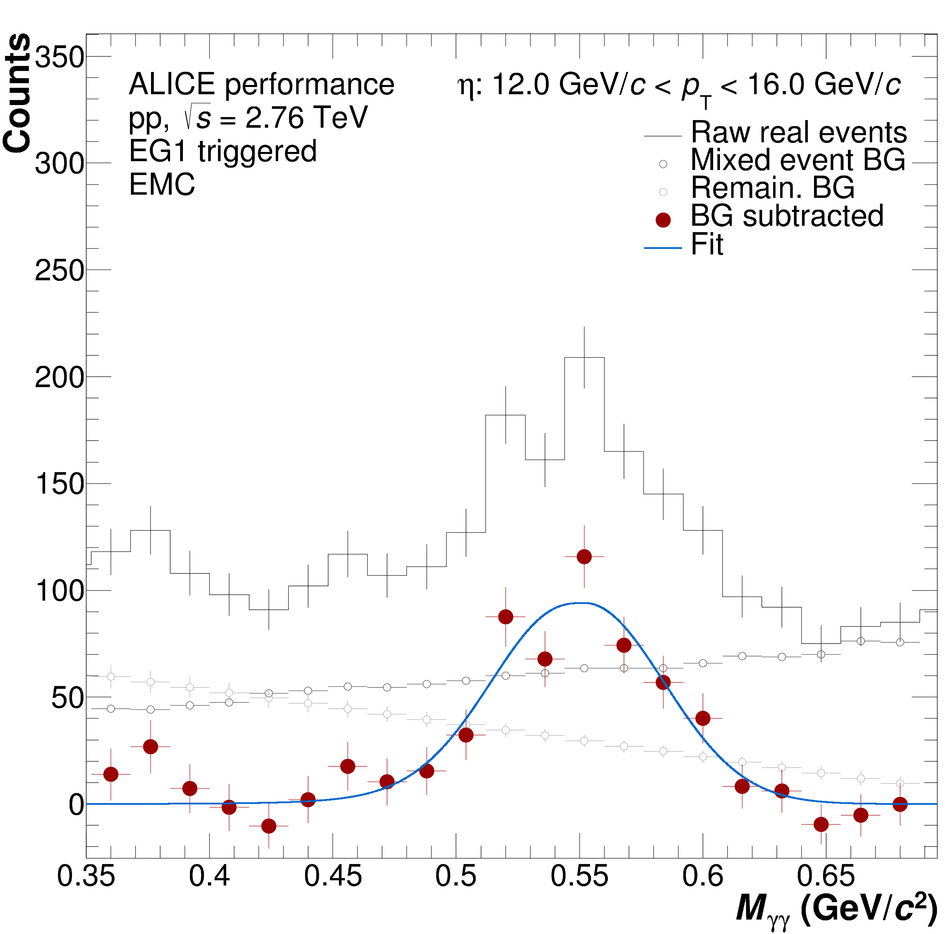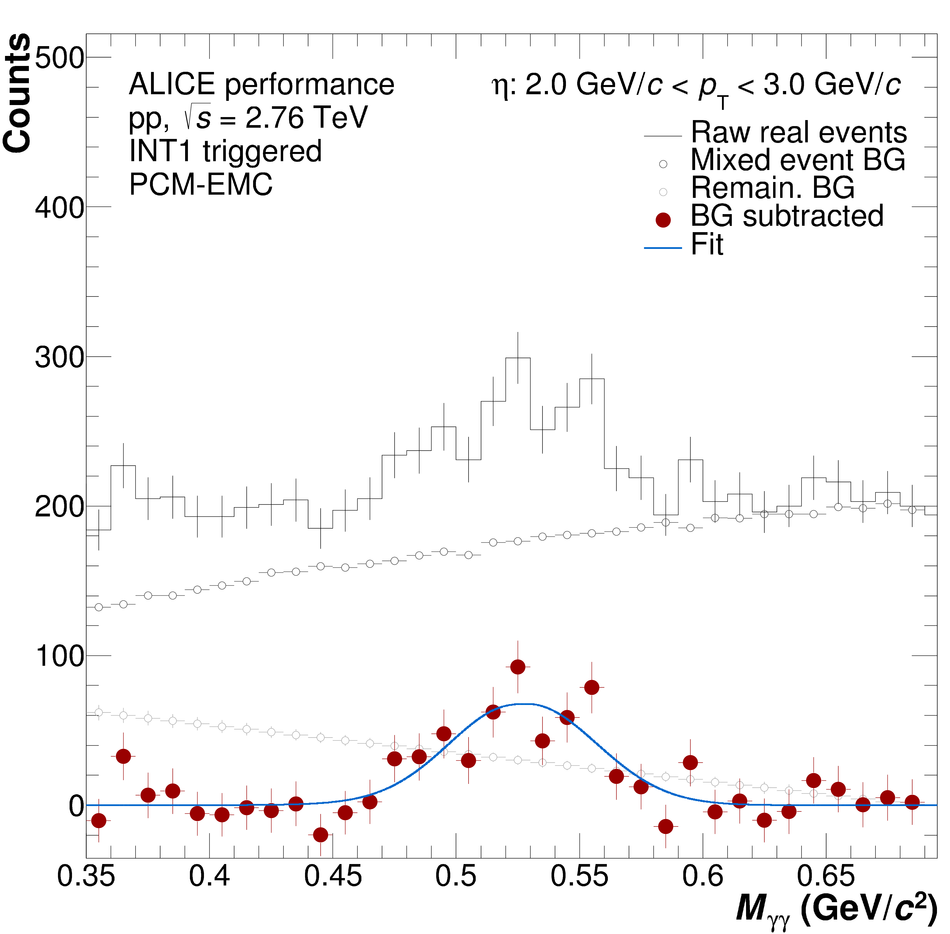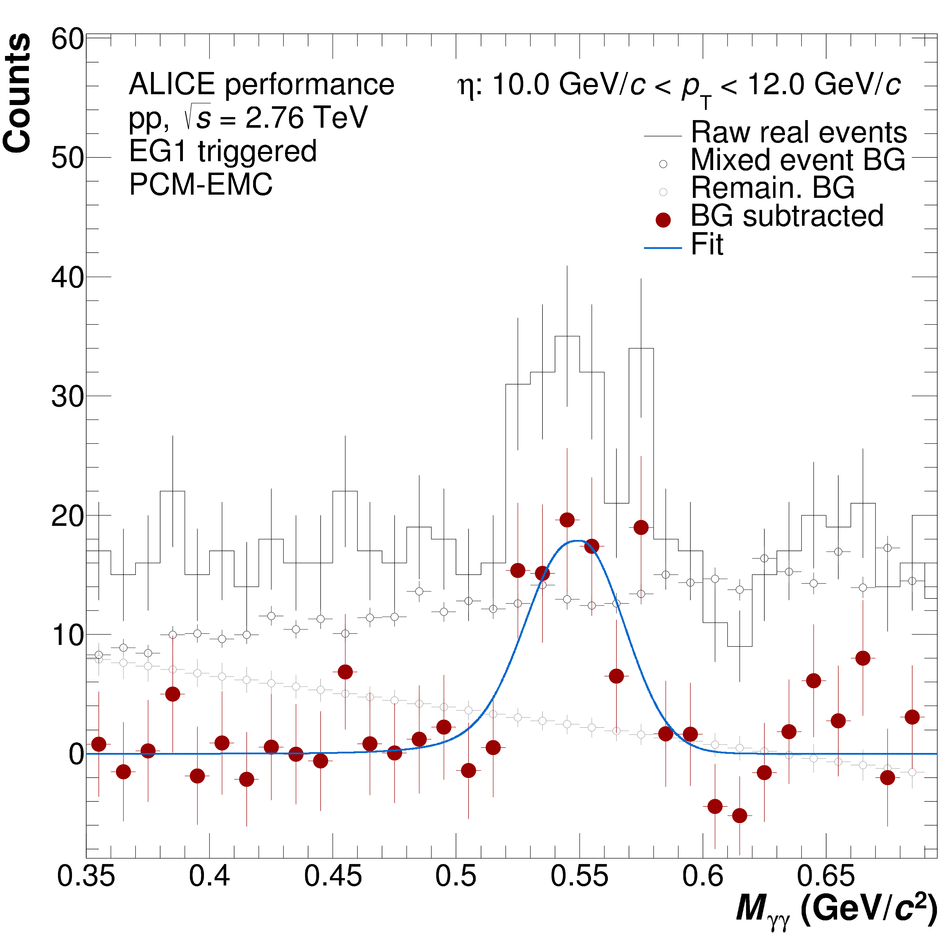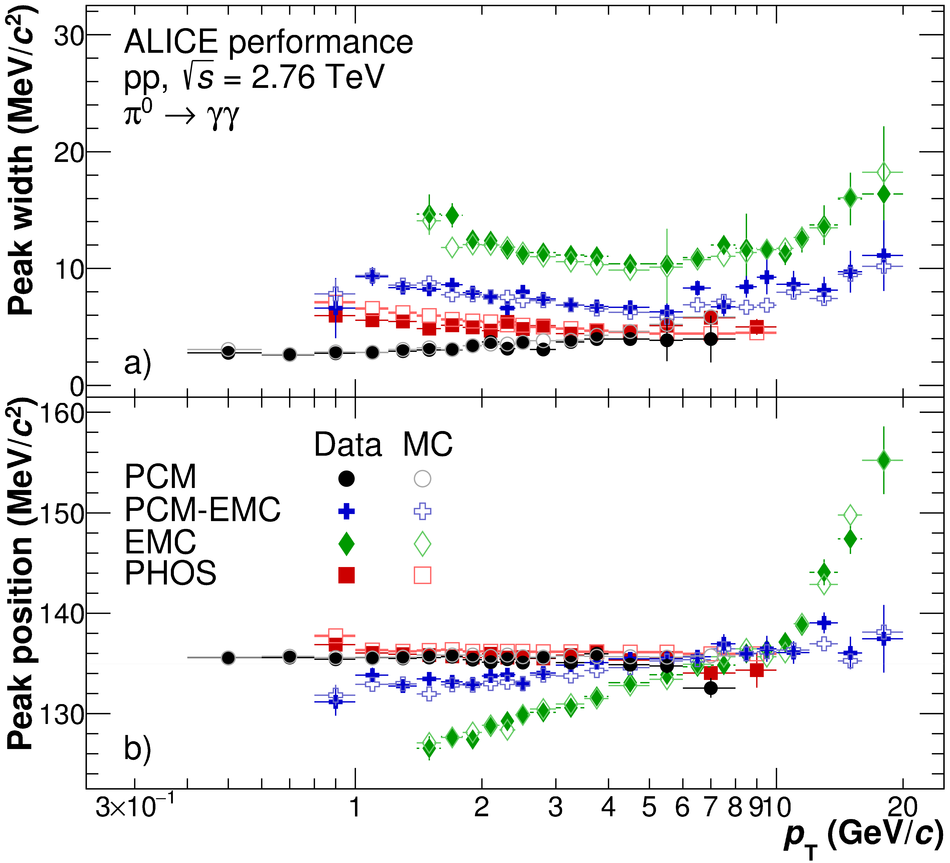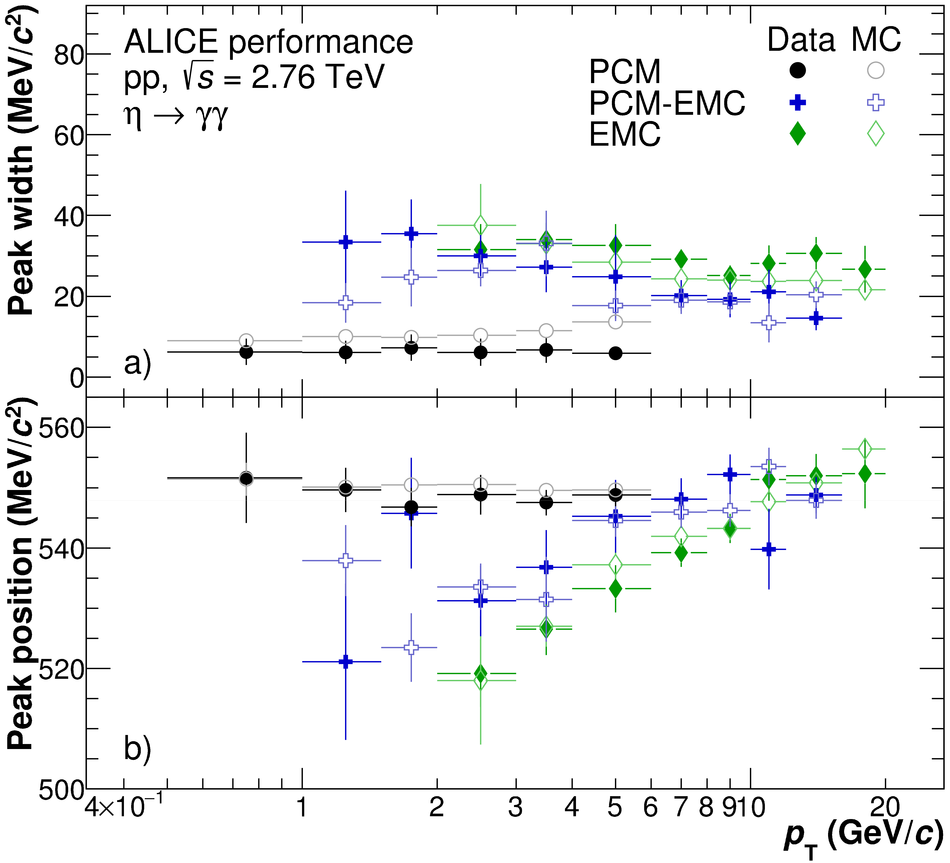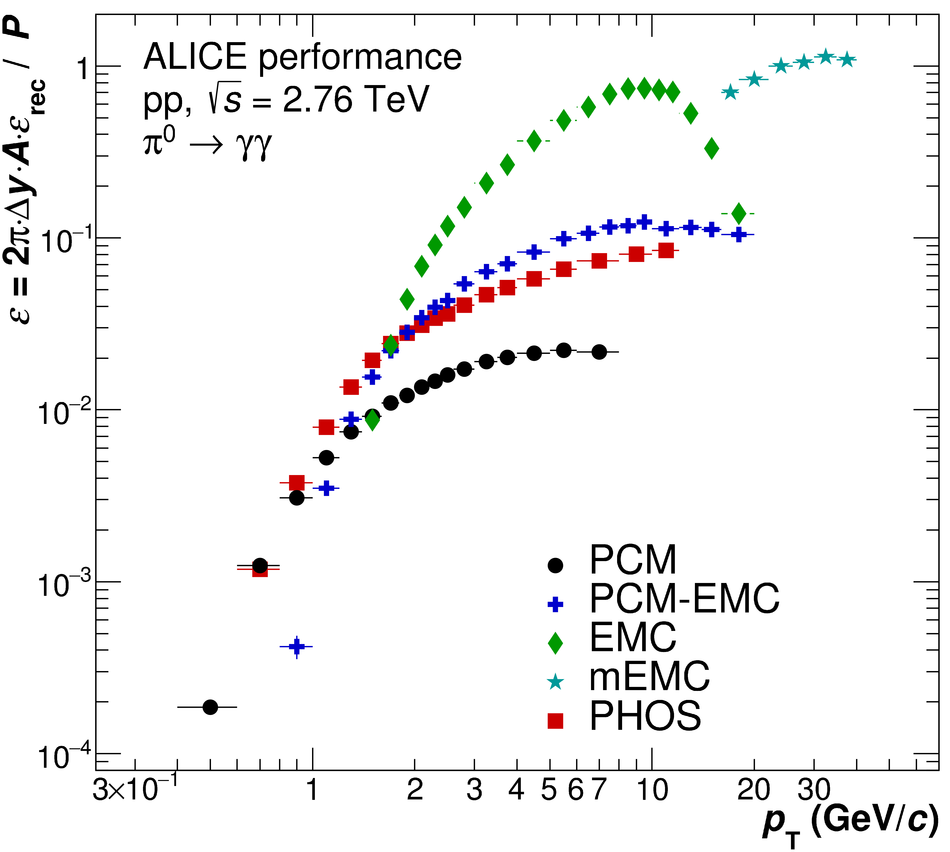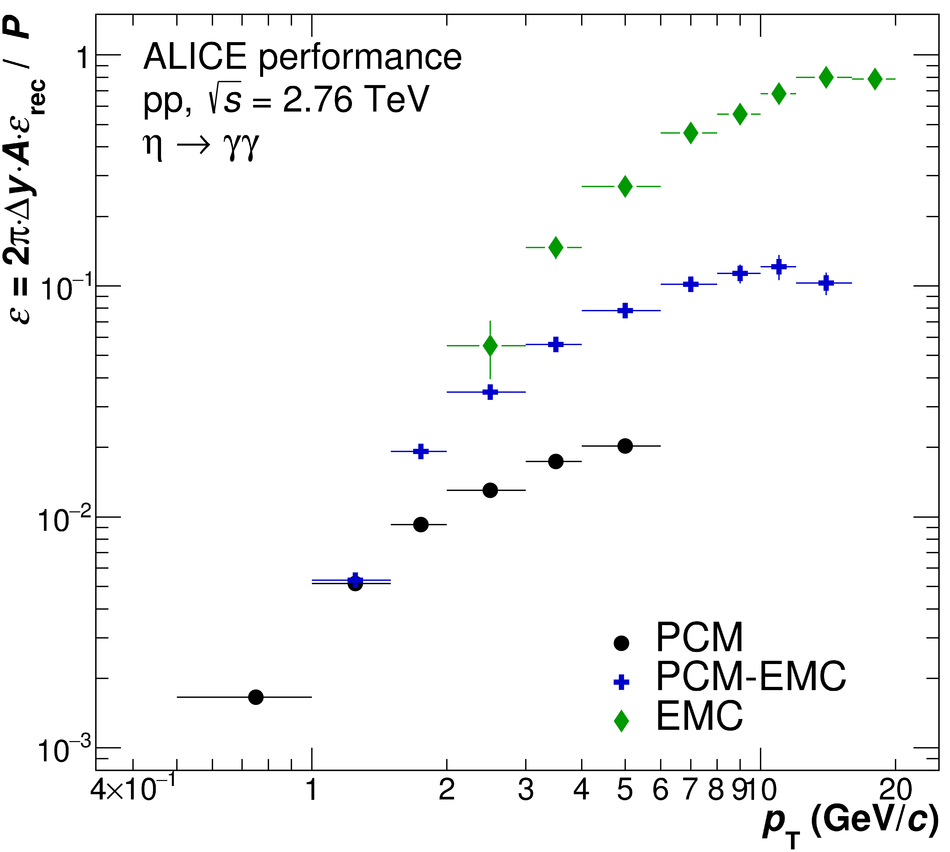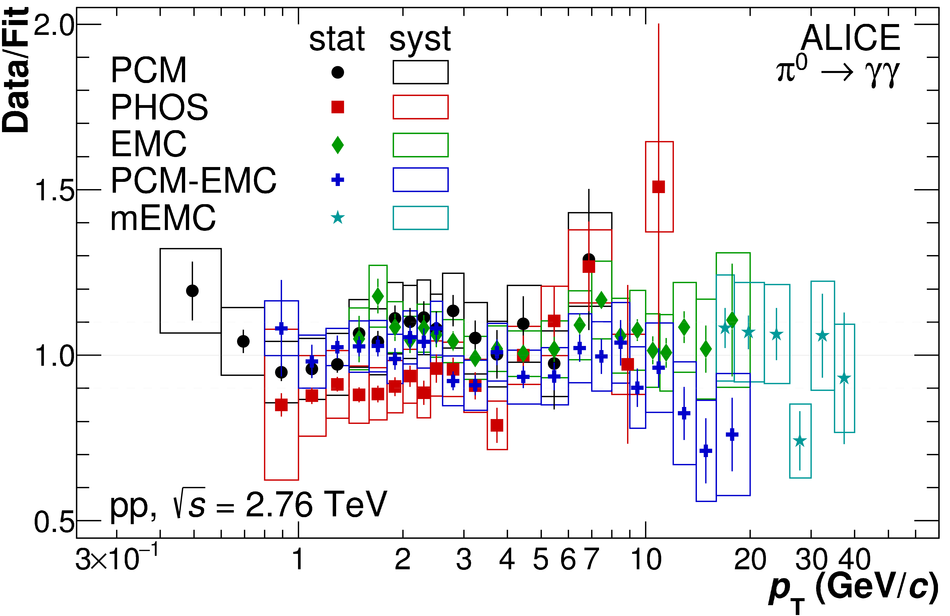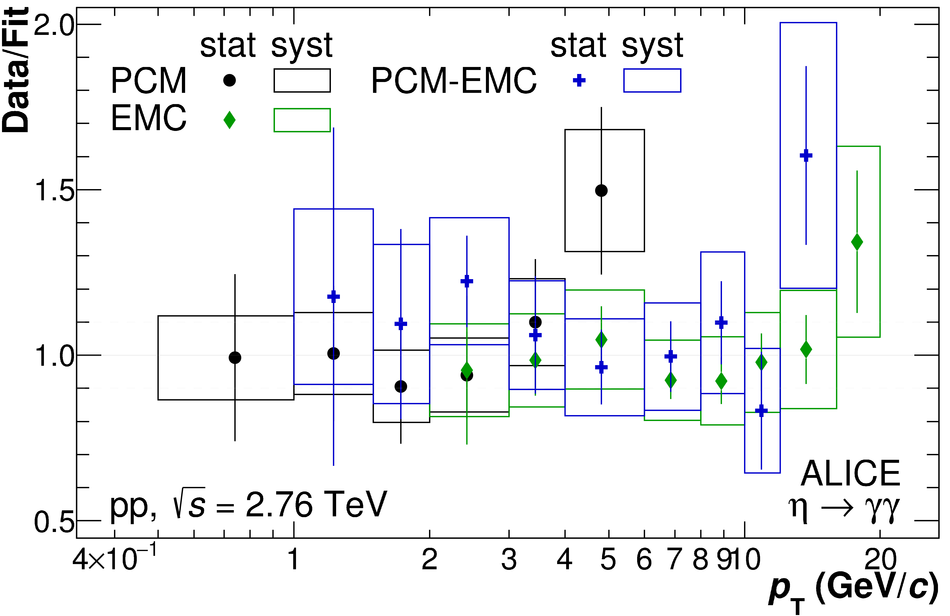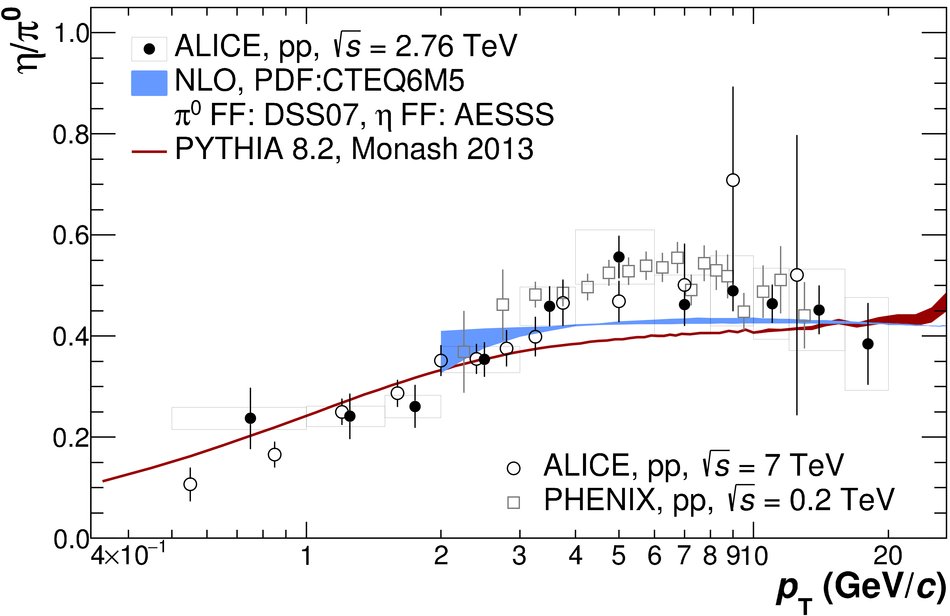The invariant differential cross sections for inclusive $\pi^{0}$ and $\eta$ mesons at midrapidity were measured in pp collisions at $\sqrt{s}=2.76$ TeV for transverse momenta $0.4<~p_{\rm T}<~40$ GeV/$c$ and $0.6<~p_{\rm T}<~20$ GeV/$c$, respectively, using the ALICE detector. This large range in $p_{\rm T}$ was achieved by combining various analysis techniques and different triggers involving the electromagnetic calorimeter (EMCal). In particular, a new single-cluster, shower-shape based method was developed for the identification of high-$p_{\rm T}$ neutral pions, which exploits that the showers originating from their decay photons overlap in the EMCal. The measured cross sections are found to exhibit a similar power-law behavior with an exponent of about $6.3$. Next-to-leading-order perturbative QCD calculations differ from the measured cross sections by about $30$% for the $\pi^0$, and between $30$-$50$% for the $\eta$ meson, while generator-level simulations with PYTHIA 8.2 describe the data to better than $10$-$30$%, except at $p_{\rm T}<~1$ GeV/$c$. The new data can therefore be used to further improve the theoretical description of $\pi^{0}$ and $\eta$ meson production.
Eur. Phys. J. C 77 (2017) 339
HEP Data
e-Print: arXiv:1702.00917 | PDF | inSPIRE
CERN-EP-2017-019



